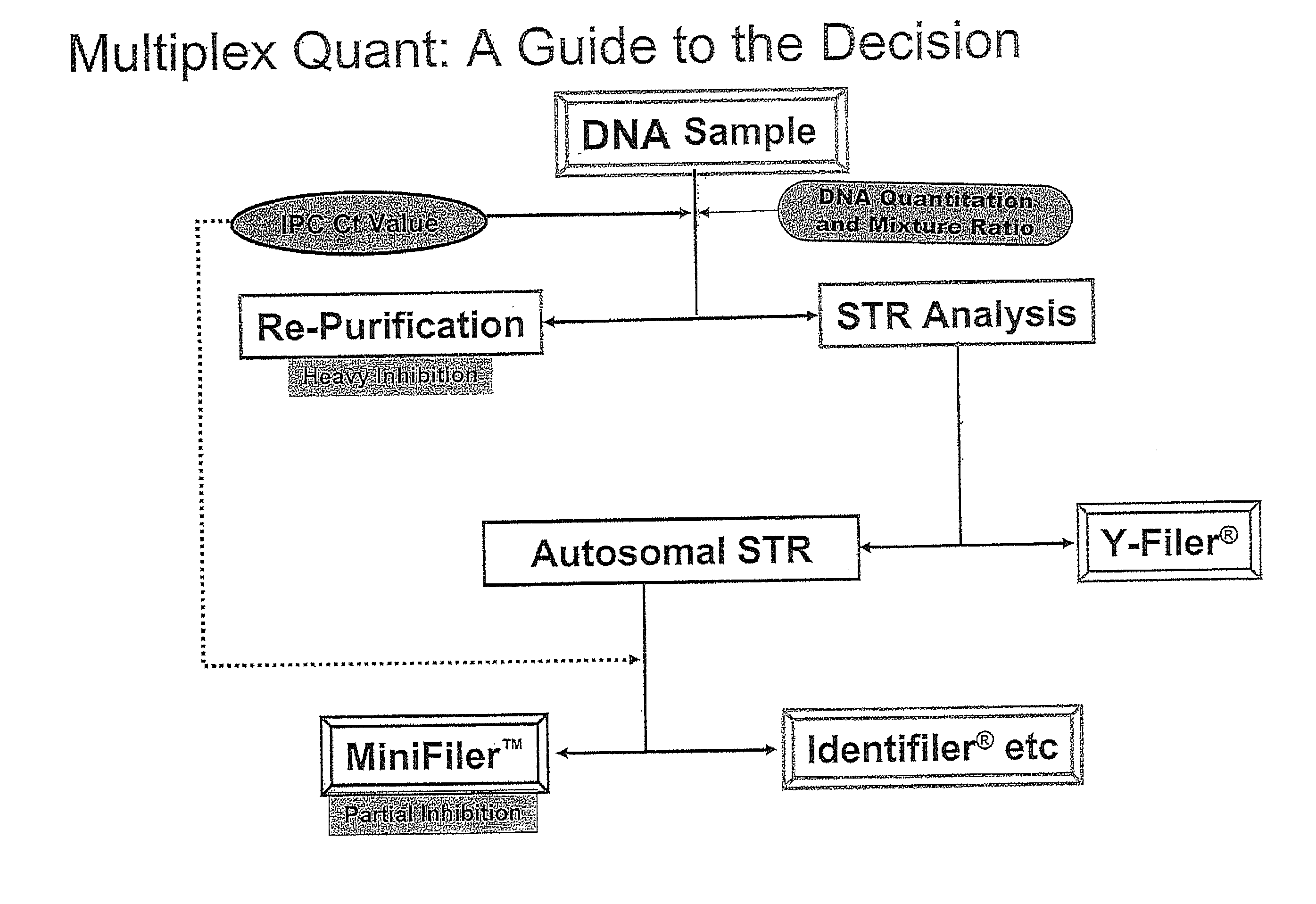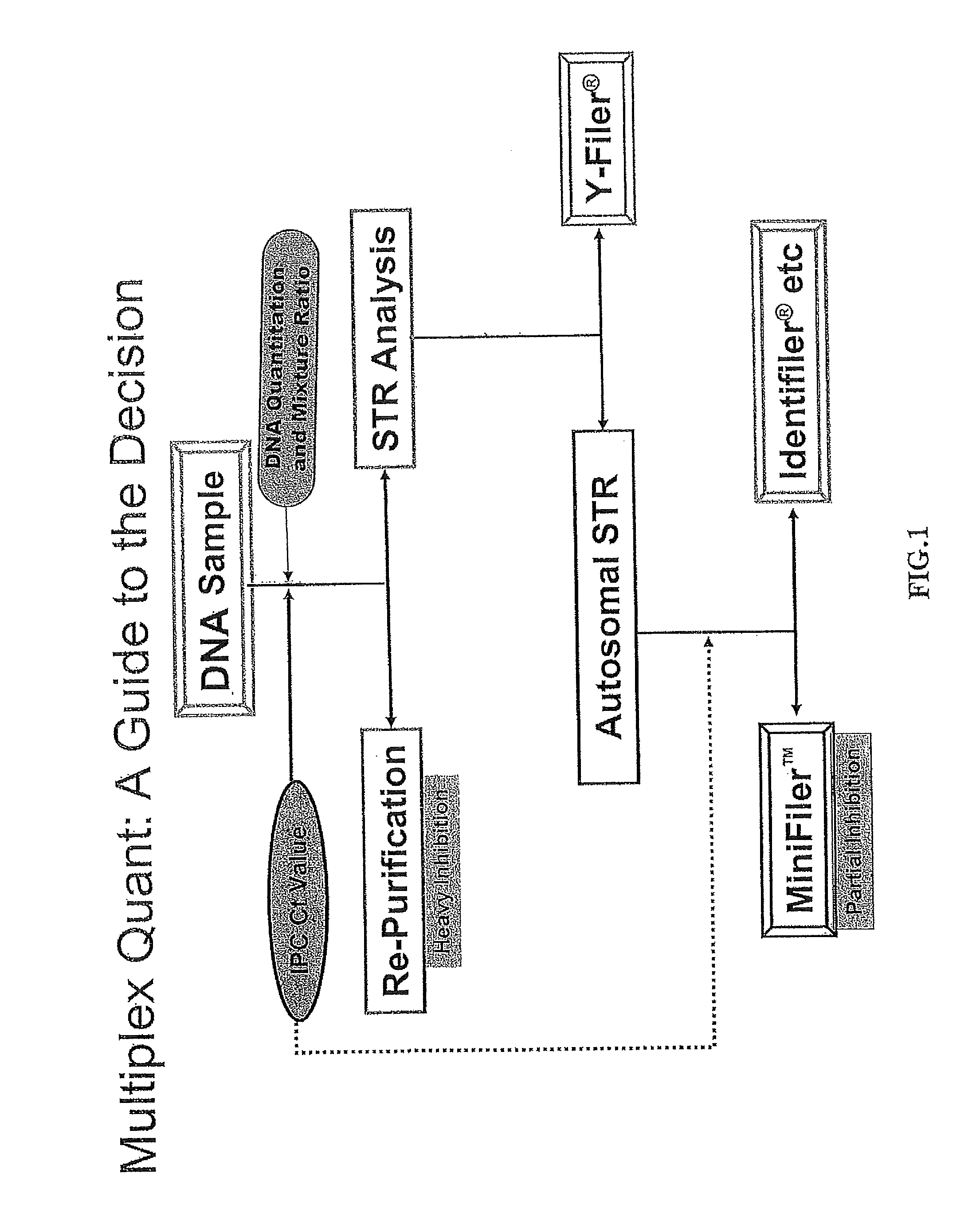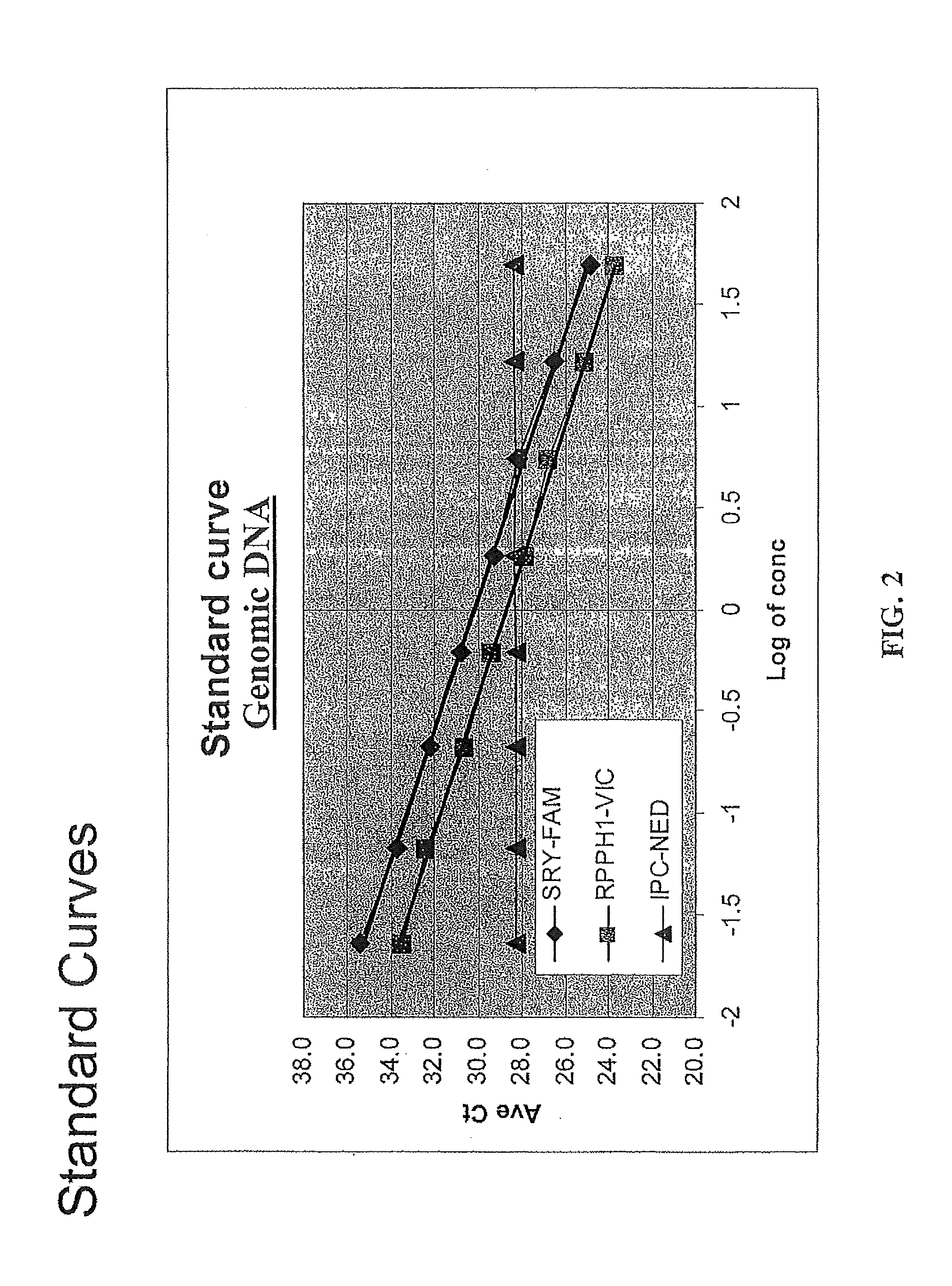Multiplex compositions and methods for quantification of human nuclear DNA and human male DNA and detection of PCR inhibitors
a technology of dna and complex compositions, applied in the field of multi-component compositions for quantification of dna and detection of pcr inhibitors, can solve the problems of unable to reliably detect the gender of human dna samples, the current approach cannot solve the problem of amplifying relatively small dna segments, and the current approach has limitations
- Summary
- Abstract
- Description
- Claims
- Application Information
AI Technical Summary
Benefits of technology
Problems solved by technology
Method used
Image
Examples
example 1
Triplex Multiplex Assays
[0106]The present triplex assays comprise co-amplification of the sex determining region Y or SRY (GeneID 6736) (SEQ ID NO: 4) on Y chromosome for quantification of human male DNA, the ribonuclease P RNA component H1 or RPPH1 (GeneID 85495) (SEQ ID NO: 3) on chromosome 14 for quantification of total human nuclear DNA, and a synthetic nucleotide template sequence (SEQ ID NO: 1) as an internal positive control (IPC). The TaqMan® probes for the measurement of human male DNA (SEQ ID NO: 10), was labeled with FAM™ (Applied Biosystems, Foster City, Calif.). The human nuclear DNA (SEQ ID NO: 9) was labeled with VIC® (Applied Biosystems, Foster City, Calif.). The novel IPC probe (SEQ ID NO: 13) was labeled with NED™ dye (Applied Biosystems, Foster City, Calif.). Information describing the commercial availability and instructions relating to TaqMan® assays and probes are provided by the manufacturer Applied Biosystems, Foster City, Calif. While the present assays are ...
example 2
Linearity and Quantification Range
[0111]The linearity and limits of quantification of the triplex assays, as described in Example 1, were determined by quantification of human DNA samples with quantities of DNA ranging from 23 pg / μl to 50.0 ng / μl in duplicate. As expected, the Ct value increased progressively with decrease in the amount of human DNA. A linear relationship between the Ct values and quantity of DNA template investigated was observed for both human nuclear and human male DNA. Ct values for the novel 130 bp IPC increased by about 0.5-1.0 at higher concentrations of human nuclear DNA because of the PCR competition. In general, the Ct values for the SRY target (SEQ ID NO: 4) were higher by 1 compared to the RPPH1 target (SEQ ID NO: 3). This observation correlates to the single copy of the Y chromosome target compared to two copies of autosomal target. The results indicate that the present triplex assay exhibits a high dynamic range and the lower limit of quantification de...
example 3
Species Specificity
[0113]The species specificity of the triplex assay was examined by amplification of 10.0 ng of DNA from orangutan, chimp, gorilla, macaque, dog, cow, pig, cat, chicken, fish (salmon), rabbit, mouse, rat, hamster, Escherichia coli, Pseudomonas sp., Neisseria gonorrhoeae, Staphyloccus sp. and Saccharomyces sp. None of the species investigated exhibited amplified products except for gorilla and chimp. Gorilla and chimp DNA exhibited VIC and FAM signal with Ct values of 37.9 (for RPPH1 (SEQ ID NO: 3) VIC labeled) and 30.7 (with SRY (SEQ ID NO: 4) FAM labeled), respectively, compared to a human specific signal of 26 Ct (for RPPH1 (SEQ ID NO: 3) VIC labeled) and 28.8 Ct (with SRY (SEQ ID NO: 4) FAM labeled). Thus, the primers and probes in the multiplex assay are specific for human DNA with some reaction with higher primate DNA, as shown in TABLE 2. The low level of gorilla and chimp signals will not interfere with distinguishing human samples from non primate animal sa...
PUM
| Property | Measurement | Unit |
|---|---|---|
| fluorescent | aaaaa | aaaaa |
Abstract
Description
Claims
Application Information
 Login to View More
Login to View More - R&D
- Intellectual Property
- Life Sciences
- Materials
- Tech Scout
- Unparalleled Data Quality
- Higher Quality Content
- 60% Fewer Hallucinations
Browse by: Latest US Patents, China's latest patents, Technical Efficacy Thesaurus, Application Domain, Technology Topic, Popular Technical Reports.
© 2025 PatSnap. All rights reserved.Legal|Privacy policy|Modern Slavery Act Transparency Statement|Sitemap|About US| Contact US: help@patsnap.com



